Isaac Julien’s Tate retrospective: multi-screens, ‘sonic tapestries’ and moments of joy
Artist and filmmaker Isaac Julien’s Tate Britain retrospective ‘What Freedom Is to Me’ questions histories, explores activism, but is also full of joy and beauty
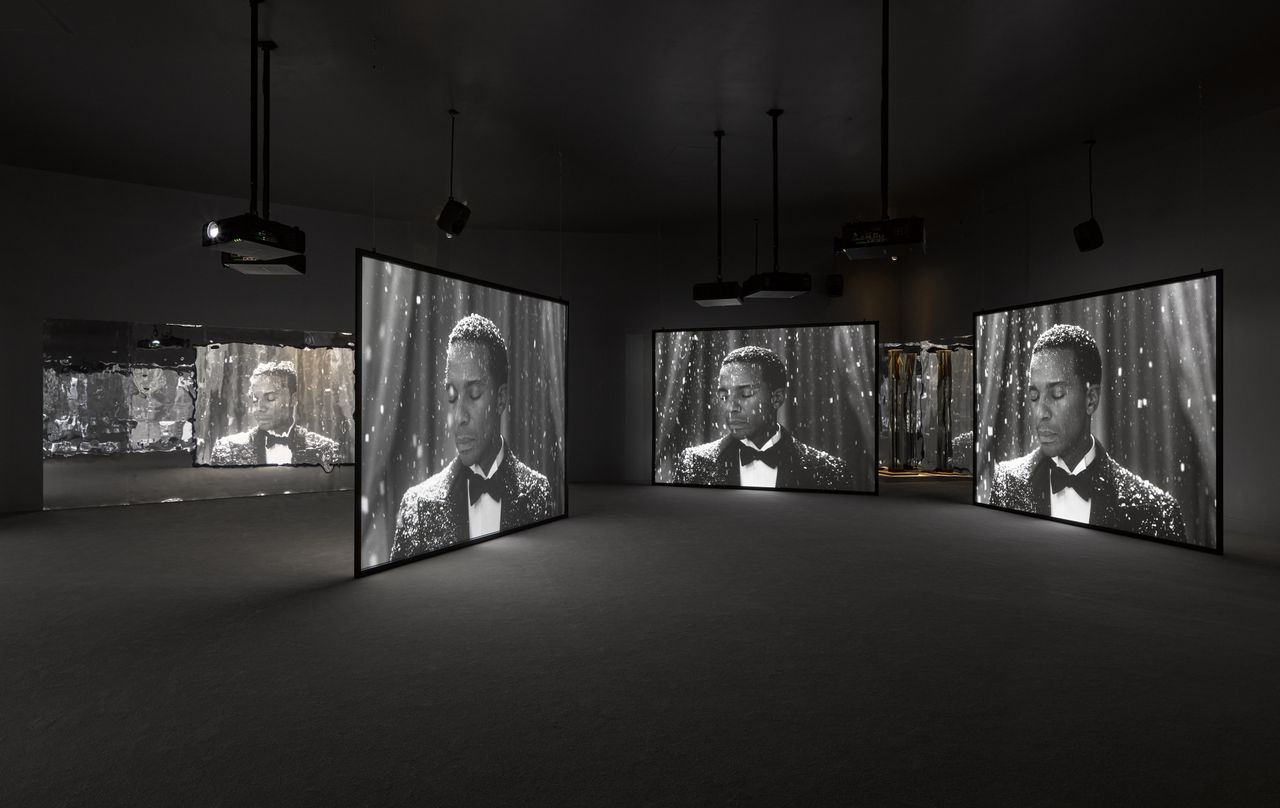
Artist Isaac Julien’ first Tate retrospective covers 40 years of work specialising in film, photography and installation exploring activism, selfhood, how we make histories, knowledge and Black and queer identity.
The first thing you see in the exhibition, which takes its title from a Nina Simone quote, is a timeline of events that most affected the artist throughout his life, starting with his parents’ migration from Saint Lucia to the UK in the 1950s. This chronology – which sits opposite one of the earliest works in the show, Territories (1984), and This is Not an AIDS Advertisement (1987) – serves as a baseline for the exhibition, in which we see Julien’s work address these same issues as his practice evolves.
Isaac Julien at Tate Britain: ‘What Freedom Is to Me’
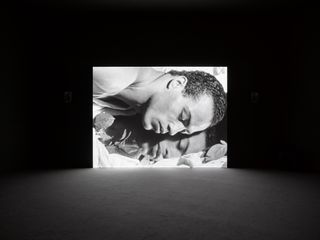
Installation view, Isaac Julien, Looking for Langston, Tate Britain, 2023
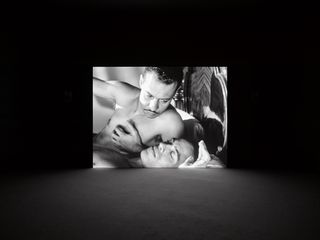
Installation view, Isaac Julien, Looking for Langston, Tate Britain, 2023
The show then opens with the artist’s most recent work, an inventive multi-channel piece about the life of writer and critic Alain Locke, Once Again… (Statues Never Die) (2022).
‘The [curation] has been in close dialogue with Isaac Julien from the outset, and that was something very important to us as curators, that we execute the vision as he conceived it, and I think it happened very organically,’ co-curator Isabella Maidment tells Wallpaper*.
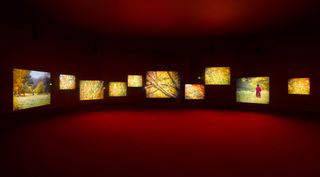
Installation view, Isaac Julien, Lessons of the Hour, Tate Britain, 2023
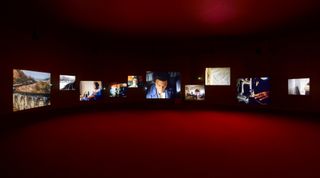
Installation view, Isaac Julien, Lessons of the Hour, Tate Britain, 2023
Julien’s work is so aesthetically rewarding, its beauty is often what dominates your initial experience of it. So the starting and ending of the exhibition with these early works reminds us of the origins of his practice and of the socio-political context in which it was forged.
‘Even though I go on to make other works, which perhaps are concerned with different themes […] connected to art and modernism, or migration movements, or the museum itself, they’re still connected to these kinds of early works which, for me, have become foundational,’ Julien explains.
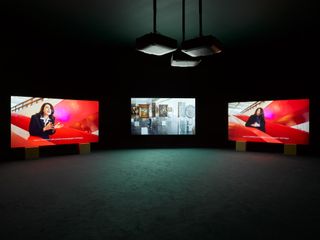
Installation view, Isaac Julien, Lina Bo Bardi – A Marvellous Entanglement, Tate Britain, 2023
The exhibition design by Adjaye Associates encourages the viewer to explore the space and walk in and out of the film works, which total about 4.5 hours (Tate also allows re-entry to the exhibition). The approach is in line with a theory of a mobile spectator that the artist has been developing in his practice, pushing the boundaries of how audiences engage with film and installation art. Another dimension to Julien’s work is sound, which he says is ‘50 per cent of the work’. Music plays a huge role in his films, as does the sound design, which adds to their transcendental quality.
Wallpaper* Newsletter
Receive our daily digest of inspiration, escapism and design stories from around the world direct to your inbox.
‘I think we’ve tried to create this sort of sonic tapestry, which whether it’s early work like Territories (1984) emulating scratch music… [or] Lina Bo Bardi - A Marvellous Entanglement (2019), which is about the influence that the Italian architect had on Brazilian and Afro Brazilian culture [but also] the effect Afro Brazilian culture had on the architect. What does it sound like? What does it signify or how does it feel to be in that culture?’
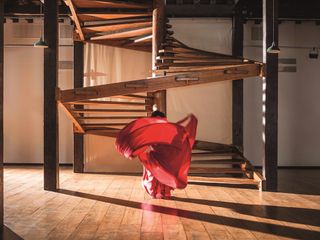
Isaac Julien, O que é um museu? / What is a Museum? (Lina Bo Bardi - A Marvellous Entanglement) 2019. Endura Ultra photograph facemounted
This interconnectedness is palpable throughout the exhibition, from the collaborators with whom Julien (a 2021 Wallpaper* Design Awards judge) has worked throughout his career to the themes that recur via his own timeline; histories and narratives are questioned in a way that informs but never feels didactic. You can learn a lot from these deeply researched works, but you can also experience the joy and the beauty in them and realise, in this life, how important these things are.
Isaac Julien, ‘What Freedom Is to Me’, Tate Britain, London, 26 April – 20 August 2023
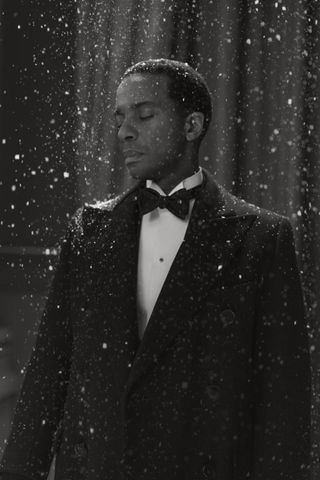
Isaac Julien, What Freedom is to me - Homage, 2022. Inkjet print on Canson Platine Fibre Rag
Amah-Rose Abrams is a British writer, editor and broadcaster covering arts and culture based in London. In her decade plus career she has covered and broken arts stories all over the world and has interviewed artists including Marina Abramovic, Nan Goldin, Ai Weiwei, Lubaina Himid and Herzog & de Meuron. She has also worked in content strategy and production.
-
 16Arlington’s Marco Capaldo on ‘turning up the volume’ with an A/W 2025 collection rooted in 1980s cinema
16Arlington’s Marco Capaldo on ‘turning up the volume’ with an A/W 2025 collection rooted in 1980s cinemaRevealed at an intimate dinner at London Fashion Week, 16Arlington designer Marco Capaldo found inspiration for an amped-up A/W 2025 collection in David Lynch’s ‘Blue Velvet’, Wim Wenders’ ‘Paris, Texas’ and Robert Palmer’s ‘Addicted to Love’ video
By Jack Moss Published
-
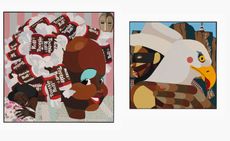 High low culture and the sickly sweetness of Tootsie Rolls: Derrick Adams in London
High low culture and the sickly sweetness of Tootsie Rolls: Derrick Adams in LondonDerrick Adams plays with themes of Black Americana in ‘Situation Comedy’ at Gagosian London.
By Hannah Silver Published
-
 Lamborghini, fast friends with the Italian State Police for two decades
Lamborghini, fast friends with the Italian State Police for two decadesWhen the Italian police need to be somewhere fast, they turn to a long-running partnership with one of the country’s most famed sports car manufacturers, Lamborghini
By Shawn Adams Published
-
 High low culture and the sickly sweetness of Tootsie Rolls: Derrick Adams in London
High low culture and the sickly sweetness of Tootsie Rolls: Derrick Adams in LondonDerrick Adams plays with themes of Black Americana in ‘Situation Comedy’ at Gagosian London.
By Hannah Silver Published
-
 The Barbican as muse: composer Shiva Feshareki on bringing the brutalist icon to life through music
The Barbican as muse: composer Shiva Feshareki on bringing the brutalist icon to life through musicFor the last two years, British-Iranian experimental composer and turntablist Shiva Feshareki has been drawing on the Barbican’s hidden history as a gateway for her new piece. She talks to Wallpaper* about her Brutalist muse
By El Hunt Published
-
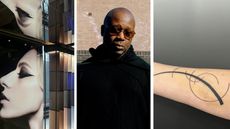 Out of office: what the Wallpaper* editors have been doing this week
Out of office: what the Wallpaper* editors have been doing this weekA taste of the dolce vita in London, some permanent artwork and a new eyeshadow palette – it's our editors' picks of the week
By Bill Prince Published
-
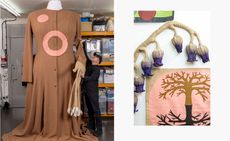 'We need to be constantly reminded of our similarities' – Jonathan Baldock challenges the patriarchal roots of a former Roman temple in London
'We need to be constantly reminded of our similarities' – Jonathan Baldock challenges the patriarchal roots of a former Roman temple in LondonThrough use of ceramics and textiles, British artist Jonathan Baldock creates a magical and immersive exhibition at ‘0.1%’ at London's Mithraum Bloomberg Space
By Emily Steer Published
-
 Discover Rotimi Fani-Kayode's fluid photographs of the queer male body, on show in London
Discover Rotimi Fani-Kayode's fluid photographs of the queer male body, on show in London‘Rotimi-Fani Kayode: The Studio – Staging Desire’ at Autograph ABP celebrates the work of the Nigerian-born photographer
By Upasana Das Published
-
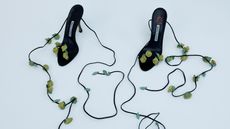 Saatchi Gallery is in full bloom with floral works from Vivienne Westwood, Marimekko, Buccellati and more
Saatchi Gallery is in full bloom with floral works from Vivienne Westwood, Marimekko, Buccellati and more‘Flowers – Flora in Contemporary Art & Culture’ at Saatchi Gallery, London, explores the relationship between creatives and their floral muses, and spans from fashion and jewellery to tattoos
By Tianna Williams Published
-
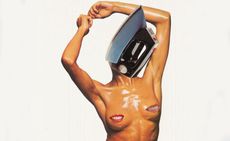 'I want to get into these images and perfume them': Linder's retrospective opens at the Hayward Gallery
'I want to get into these images and perfume them': Linder's retrospective opens at the Hayward Gallery'Linder: Danger Came Smiling' gathers fifty years of the artist's work at the Hayward Gallery. We meet the punk provocateur ahead of her first retrospective
By Hannah Silver Published
-
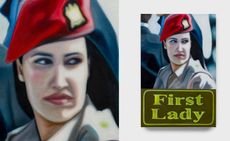 Tasneem Sarkez's heady mix of kitsch, Arabic and Americana hits London
Tasneem Sarkez's heady mix of kitsch, Arabic and Americana hits LondonArtist Tasneem Sarkez draws on an eclectic range of references for her debut solo show, 'White-Knuckle' at Rose Easton
By Zoe Whitfield Published